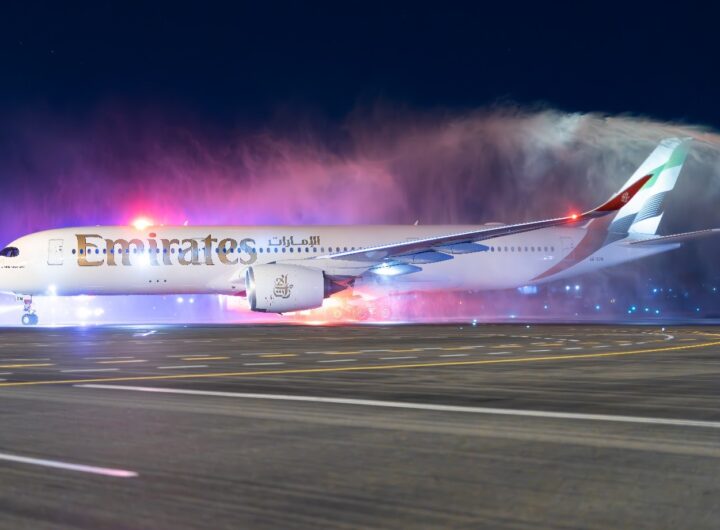
The International Air Transport Association (IATA) has released data for global passenger demand in October 2024, revealing continued solid growth in the industry. This positive trend is a testament to the resilience and recovery of the aviation sector post-pandemic.
Key Highlights
- Total Demand: Measured in revenue passenger kilometres (RPK), total demand increased by 7.1% compared to October 2023.
- Total Capacity: Measured in available seat kilometres (ASK), total capacity rose by 6.1% year-on-year.
- Load Factor: The load factor, which represents the percentage of available seating capacity filled with passengers, reached 83.9%, an increase of 0.8 percentage points compared to October 2023.
International and Domestic Demand
- International Demand: Rose by 9.5% compared to October 2023, with capacity up by 8.6% year-on-year and the load factor reaching 83.5%.
- Domestic Demand: Increased by 3.5% compared to October 2023, with capacity up by 2.0% year-on-year and the load factor at 84.5%.
IATA’s Director General Willie Walsh highlighted the significance of these improvements, noting the industry’s efficiency in flying passengers more effectively. “Continued strong and stable demand is good news, but just as important is the steady improvement in load factors. It shows what a great job the industry is doing in flying people more efficiently,” said Walsh. He emphasized the importance of keeping planes full to maximize economic and social benefits while minimizing emissions.
Regional Breakdown
- Asia-Pacific: Achieved a 17.5% year-on-year increase in demand, with a load factor of 82.9%.
- Europe: Saw an 8.7% increase in demand, with a load factor of 85.7%.
- Middle East: Experienced a 2.2% increase in demand, with a load factor of 80.2%.
- North America: Recorded a 3.2% increase in demand, with a load factor of 84.2%.
- Latin America: Noted a 10.9% increase in demand, with a load factor of 85.3%.
- Africa: Reported a 10.4% increase in demand, with a load factor of 73.2%.
Domestic Market Performance
- China: Demonstrated strong domestic demand with a 9.7% increase, driven by the increased use of wide-body aircraft.
- Australia: Showed a 2.9% increase in domestic demand, with a load factor of 86.2%.
- Brazil: Experienced a 9.5% increase in domestic demand, with a load factor of 83.7%.
- India: Recorded a 6.1% increase in domestic demand, with a load factor of 81.7%.
- Japan: Reported a 3.3% increase in domestic demand, with a load factor of 84.0%.
- US: Showed a slight decline in domestic demand by 1.2%, with a load factor of 82.5%.
The data underscores the robust recovery of the global aviation industry, reflecting growing passenger confidence and demand for air travel. As the industry continues to adapt and innovate, maintaining high load factors and optimising capacity will be crucial for sustaining growth and minimising environmental impact.
 Emirates A350 Debuts in Adelaide with New Premium Economy, Boosting Connectivity and Comfort to Dubai
Emirates A350 Debuts in Adelaide with New Premium Economy, Boosting Connectivity and Comfort to Dubai  Qantas Elevates A380 First Class with New Fine Dining, Aesop Amenity Kits and Bollinger Champagne
Qantas Elevates A380 First Class with New Fine Dining, Aesop Amenity Kits and Bollinger Champagne  Qatar Airways’ New Formula 1 Livery Takes Off: Swizz Beatz–Designed Boeing 777 Tours the World After Qatar Grand Prix Debut
Qatar Airways’ New Formula 1 Livery Takes Off: Swizz Beatz–Designed Boeing 777 Tours the World After Qatar Grand Prix Debut  Jetstar Launches First Direct Brisbane–Cebu Flights: New Gateway from Queensland to One of the Philippines’ Most Beautiful Islands
Jetstar Launches First Direct Brisbane–Cebu Flights: New Gateway from Queensland to One of the Philippines’ Most Beautiful Islands  Singapore Introduces First-Ever Mandatory Sustainable Aviation Fuel Levy Starting 2026
Singapore Introduces First-Ever Mandatory Sustainable Aviation Fuel Levy Starting 2026  Seabourn’s ‘Explore More Event’: Save Up to 15% Plus Shipboard Credit on Ultra-Luxury Cruises
Seabourn’s ‘Explore More Event’: Save Up to 15% Plus Shipboard Credit on Ultra-Luxury Cruises  Silversea Wave Season 2026: Save Up to 40% on Luxury Cruises to All Seven Continents
Silversea Wave Season 2026: Save Up to 40% on Luxury Cruises to All Seven Continents 